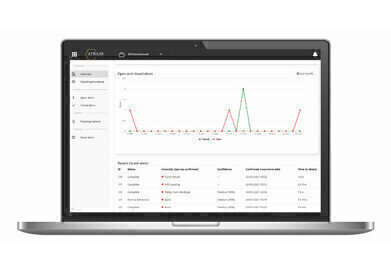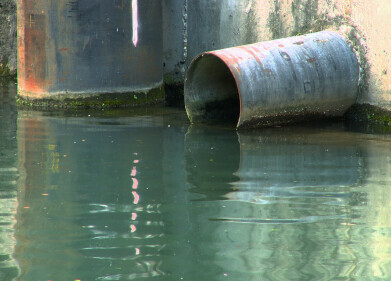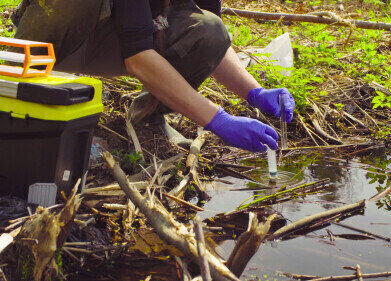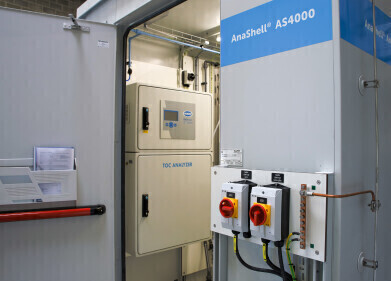Water Pollution Monitoring
Rising to the pollution challenge with machine learning
Feb 21 2022
Better analysis of existing data on rising mains can mitigate risk of pollution incidents, says George Heywood, analytics innovation lead for technology specialist Ovarro.
The Government has left the water companies and Ofwat in no doubt that they need to do more to protect the environment from pollution and allay the concerns of stakeholders. In a statement published on 2 February 2022, environment minister Rebecca Pow said water quality was an absolute priority and also called for measures to “reduce harm from storm overflows, improve monitoring and reporting of pollution incidents making this more transparent, to tackle run-off from agriculture, and protect the health of our rivers and seas.”
Rising mains
Rising main sewers - pressurised pipes that pump wastewater from a pumping station towards a treatment works - are one asset set that requires focus. These are high risk, critical assets, but with many in the UK ageing and becoming more vulnerable to bursts, historic programmes of proactive maintenance and investment may no longer be enough to keep up with the rate of deterioration.
Often situated in hard-to-reach, remote locations, including beneath rivers, railways and roads, and in environmentally sensitive areas, a burst rising main can have catastrophic ecological impact, with consequences that are unacceptable in the eyes of customers, regulators and stakeholders.
Technical and logistical limitations in rising main monitoring can mean utilities are alerted – often by a member of the public - hours or even days into the event. This is too late to take action that would prevent a pollution event, likely results being a costly clean-up operation, financial penalties, prosecutions and long-term reputational damage.
Given the mounting stakeholder pressure and water companies’ own commitments to cut pollutions, it is unsurprising they are working with the supply chain to develop innovative solutions.
One example from Ovarro is BurstDetect, a cloud-based early warning system that was developed in collaboration with UK utilities, in direct response to the urgent challenge to reduce pollutions.
The tool detects rising main bursts with potential to cause pollution incidents. Through a dashboard, it provides an overview of pumping station status and both ongoing and historical events. If data suggests a potential burst, an alert is sent to control rooms often within an hour of occurrence.
This ensures users are able to make swift, informed decisions and quickly allocate resources to reduce environmental impact. Such early action can prevent the escape of sewage and resulting environmental damage, ensuring companies fulfil their environmental obligations and avoid fines, regulatory penalties and prosecutions.
Training and testing approach
BurstDetect can be applied to nearly all pumping stations – even those with just basic pump status monitoring – and requires no additional hardware, with the aim of achieving 100% coverage in networks being monitored. The system accepts data at a range of monitoring frequencies with algorithms being applied to understand and characterise ‘normal’ pumping station behaviour.
This “training and testing” approach to machine learning is becoming increasingly important to water companies, giving them more actionable insight than ever before, utilising data that may not have been fully harnessed otherwise.
Both during and following the development of BurstDetect, Ovarro undertook trials using real world data, provided blind by a number of water companies. In some cases, bursts were detected days or even weeks in advance of current methods. The most recent trials have shown that the newest algorithm is able to detect bursts on pumping stations where only pump status is being monitored, making the product immediately applicable to almost all rising mains without the need for capital investment.
Automated algorithms, such as those created for BurstDetect, can always be improved and as water companies begin to implement the technology, Ovarro’s data scientists work with them to assess the accuracy of alerts. By growing this dataset, through continuous feedback, BurstDetect’s algorithms can learn and the data science teams can continually improve the technology.
With so much available water and wastewater network data, it is just not possible for humans to process and analyse the information themselves. By having the correct technology and processes in place, the stage will be set for utilities to rapidly increase their real-time and predictive capabilities, helping them regain customer and regulatory trust and ensure greater protection of precious watercourses.
Digital Edition
IET 34.2 March 2024
April 2024
Gas Detection - Biogas batch fermentation system for laboratory use with automatic gas analysis in real time Water/Wastewater - Upcycling sensors for sustainable nature management - Prist...
View all digital editions
Events
Apr 30 2024 Melbourne, Australia
Apr 30 2024 Birmingham, UK
May 03 2024 Seoul, South Korea
May 05 2024 Seville, Spain
May 06 2024 Minneapolis, MN, USA


















